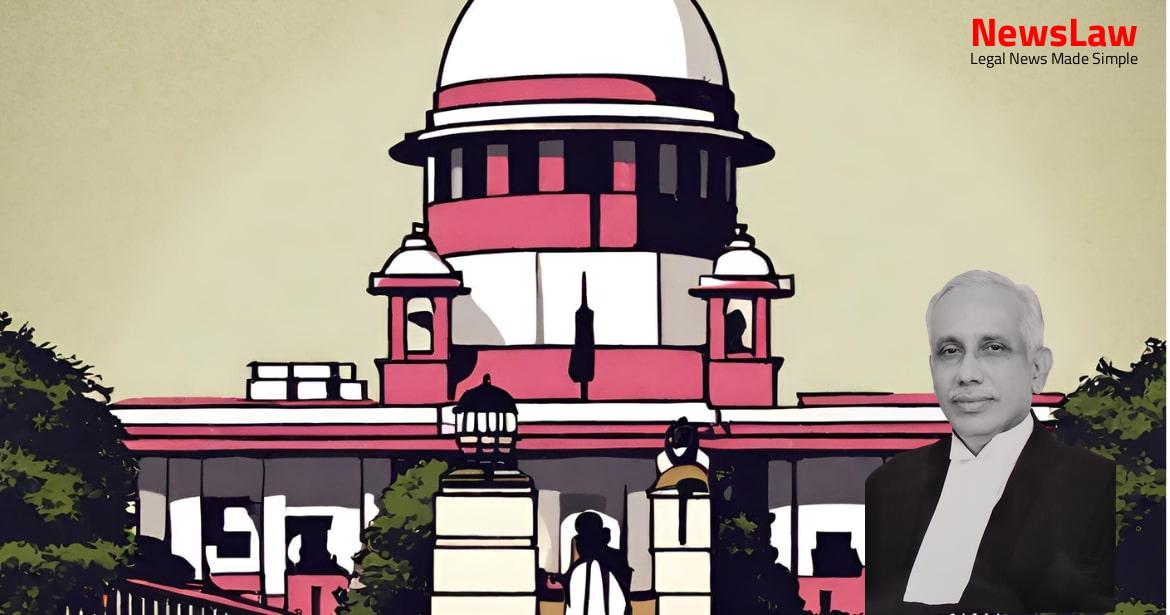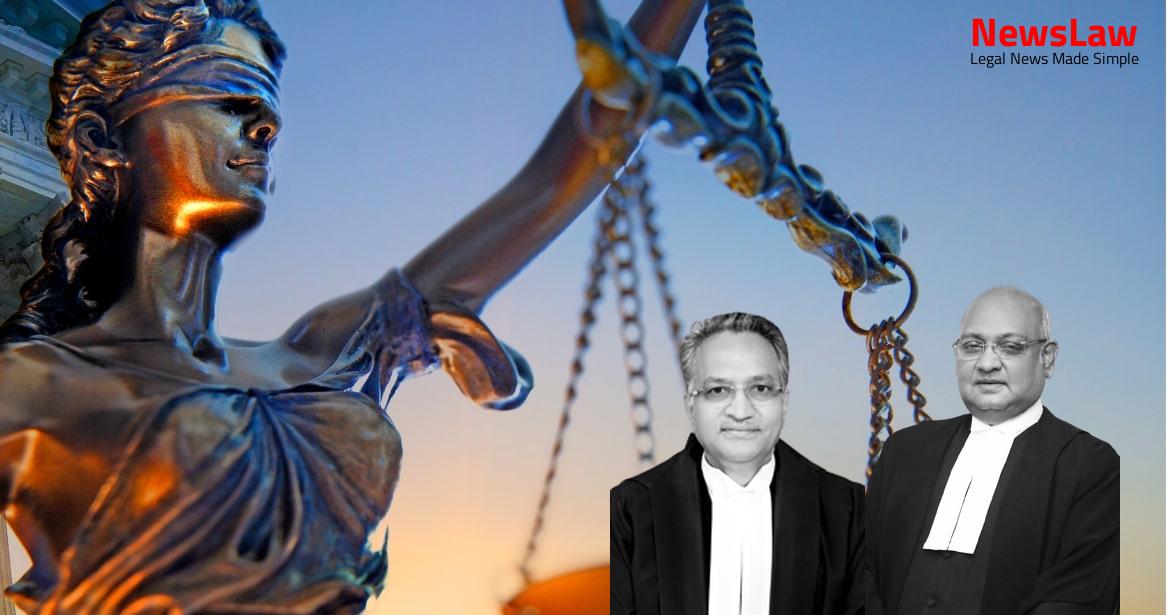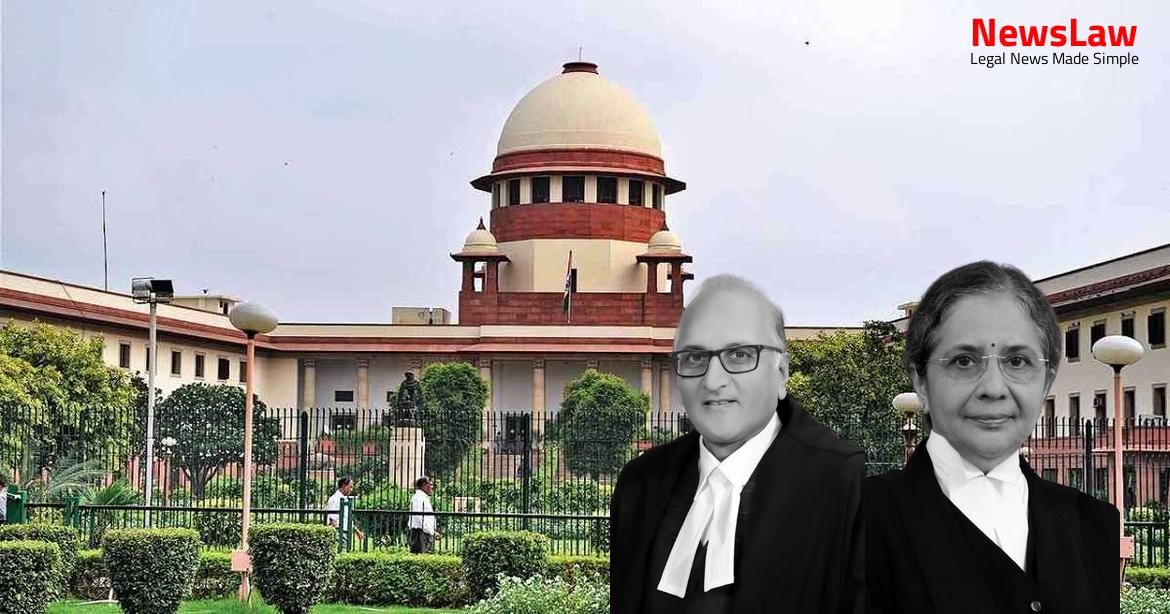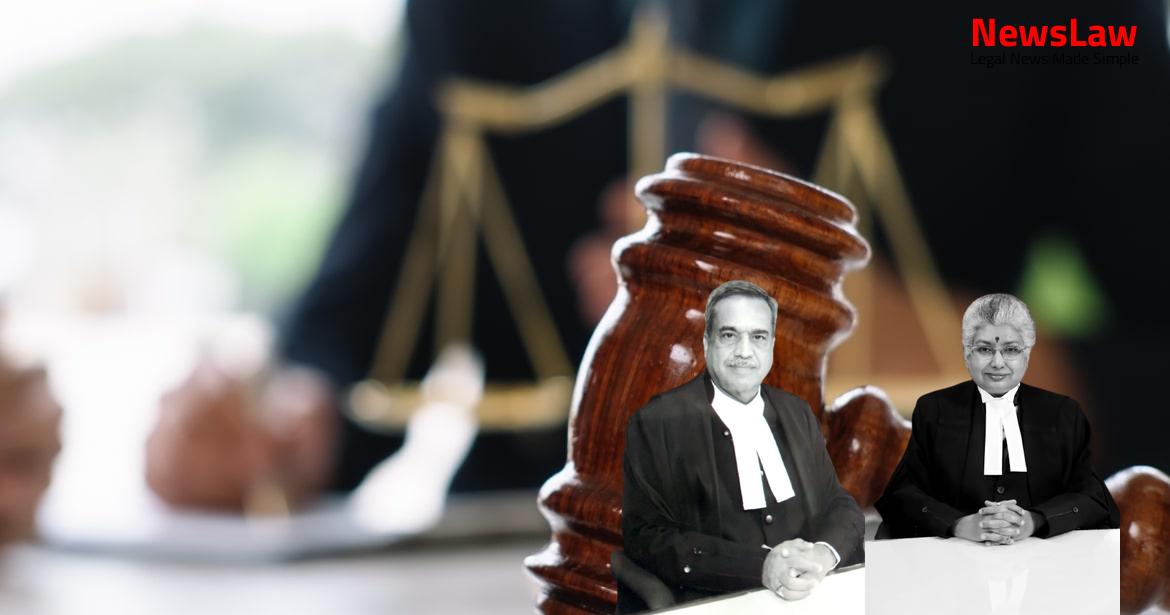In a significant turn of events, the Supreme Court has issued a ruling overturning the decision of the High Court in the contentious land dispute case involving the Society and Third Respondent. This ruling marks a crucial development in the long-standing legal battle over the ownership and possession of the disputed land. Stay tuned to understand the intricacies of the Supreme Court’s decision and its implications on the involved parties. #LandDispute #SupremeCourtRuling #LegalBattle
Facts
- The land in question was requested by the appellant for acquisition in 1982.
- A society claimed ownership of the land in Survey No.30 and requested withdrawal of the acquisition.
- A total of 2 acres 36 guntas out of 5 acres 33 guntas was handed over to the appellant.
- Legal proceedings, including writ petitions and appeals, ensued regarding possession and ownership of the land.
- Multiple petitions were filed by the society claiming ownership and challenging acquisition orders.
- The High Court granted interim orders allowing possession to be handed over to the appellant in phases.
- There were disputes over possession and compensation for the acquired land.
- The State Government issued various notifications and orders regarding de-notification and withdrawal of the land.
- The appellant contested the de-notification efforts and sought legal recourse.
- The High Court dismissed certain petitions for acquisition and de-notification, imposing costs on the parties.
- Attempts were made to show that the petitioner was attempting fraud and suppression of facts.
- There were disagreements over the use and possession of the land between the appellant and the society.
- Despite legal battles, the State Government issued orders without affording proper opportunities for hearing to the appellant.
Also Read: Illegal Sand Mining Case: Supreme Court Judgment
Arguments
- The disputed property is an integral part of the layout formed by the appellant.
- The individual interest of the third respondent should not impede larger public interest.
- The purchaser has already formed sites on the disputed property.
- One-third of the 3.5 acres has been sold to third parties by the third respondent through a registered sale deed.
- A portion of the disputed property is reserved for civic amenities.
- De-notifying the land would negatively impact the planned development of the layout causing public inconvenience.
- The application for de-notification cannot be maintained by the third respondent who has already sold the land.
- Section 48(1) of the L.A Act is not meant for owners to de-notify land acquired for public purpose.
- The exercise of power under Section 48(1) by the first respondent is deemed arbitrary and lacks bona fides, prejudicing the appellant’s interest.
- The appellant is not a housing society and 90% of its members are not eligible for membership or site allotment.
- The application for de-notification of land was not made with any malafides, as conveyed by the Local City Municipal Council Member.
- The State Government de-notified the land in favor of the third respondent considering the hardships faced.
- A sale deed executed by the third respondent in 1992 was produced as evidence of conveying better title to purchasers.
- The third respondent admitted selling the land but argued that de-notification was necessary to convey better title to buyers.
- The fourth respondent filed an application claiming purchase of a portion of the disputed property.
- It is contended by learned senior counsel that the appellant society is not a bona fide housing society.
- The third respondent seeks dismissal of the appeal based on the above contentions.
Also Read: Validity of Will: Harbans Lal vs. Surinder Pal Sharma
Analysis
- Section 54 of the old Act gives power to the government for withdrawal of the land before possession is taken.
- The Select Committee clarified that the government may withdraw from acquiring land if it was misled about its value.
- Government has the power to withdraw from acquisition proceedings if possession has not been taken.
- The government should protect itself by refraining from taking possession until after the judge’s award if there is a material difference in the property’s value.
- Section 48 of the L.A. Act allows the government to withdraw from acquiring land if possession has not been taken.
- The Collector determines the compensation due for damages suffered by the owner in case of withdrawal.
- Part III of the Act applies to the determination of compensation under this section.
- The government’s power to de-notify land from acquisition should be carefully exercised with consideration for public interest and valid reasons.
- Withdrawal from acquisition should not be arbitrary or whimsical.
- Any grievances regarding the bona fides of a society should be lodged before the competent authority.
- Lands de-notified for public purposes should be utilized strictly according to the approved layout plan.
- Violation of directions by authorities will be strictly viewed.
- Private layouts should strictly adhere to the approved layout plan and development scheme.
- De-notifying lands acquired for public purposes can adversely affect planned development and public infrastructure.
- Government should refrain from de-notifying lands acquired for layout formation or public purposes to avoid public inconvenience.
- Courts should be strict in considering de-notification pleas for acquired lands.
- Private interests should be subordinated to public good in land acquisition matters.
- An important change in law occurred in 1894 by enactment of section 48 regarding land acquisition and de-notification.
- Withdrawal from land acquisition can be useful in cases of government being misled about land value.
- Land de-notification should not be allowed if it adversely affects the layout or public amenities.
- Experience shows misuse of de-notification powers by influential persons and land mafias.
- The Manipulative formation of sites and wrong information provided to members regarding civic amenity sites is a violation.
- Withdrawal from land acquisition should ensure liberal compensation to landowners.
- De-notification orders have been issued without proper consideration and are arbitrary in nature.
- Land acquired should be utilized as per the intended purpose for public welfare and infrastructure development.
- Unscrupulous practices like illegal sale and formation of sites in reserved areas should be strictly dealt with.
- Withdrawal from land acquisition should not occur after an award is made, and should be based on valid reasons.
- Possession of acquired land should be taken to avoid withdrawal from land acquisition.
- Land de-notification can result in ruining the planned development and infrastructure of a city.
- Large-scale occupation of land by slum dwellers creates social and human problems that are difficult to address for municipalities and governments.
- It is crucial to have planned development of cities and adhere to planning schemes to avoid adverse effects of de-notification of land.
- Town planning schemes are established to meet the immediate needs of the community and ensure the availability of utilities and facilities to the public.
- The liberty to withdraw from land acquisition before taking possession was provided to prevent the government from paying excessive award amounts when the intended purpose of acquisition could not be achieved.
- The State Government is not liable for the occupation of land by trespassers.
Also Read: Land Title Dispute: High Court Judgement Set Aside by Supreme Court of India
Decision
- Contempt Petition No. 823 of 2018 filed by S. Krishnappa alleged trespassing and illegal construction on disputed property.
- Planning/development authorities in Karnataka, including BDA, are directed not to permit change of land use within approved layouts.
- The appellant is prohibited from selling or allotting any portion of the disputed property.
- BDA Commissioner to ensure compliance with the order.
- Authorities directed to develop balance of disputed property as a park or playground for public benefit.
- Any alteration to sanctioned scheme or layout plan is prohibited.
- If appellant has allotted sites, they must refund with interest.
- State Government to take possession of disputed property and transfer it to appellant.
- Reserved sites for amenities must be used as intended.
- Appellant to reserve entire disputed property for civic amenities and playground.
- Judgment of Division Bench and Single Judge set aside.
- Orders of 1st respondent and related notification regarding disputed lands are quashed.
Case Title: M/S VINAYAK HOUSE BUILDING COOPERATIVE SOCIETY LTD. Vs. THE STATE OF KARNATAKA
Case Number: C.A. No.-003600-003600 / 2011



